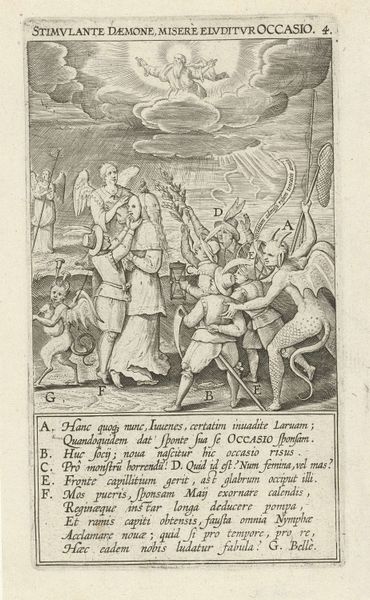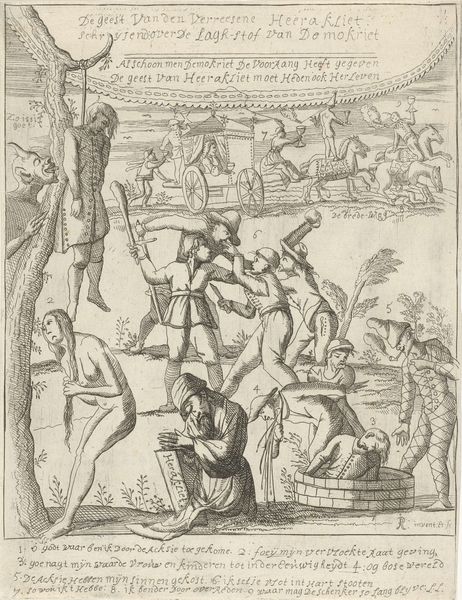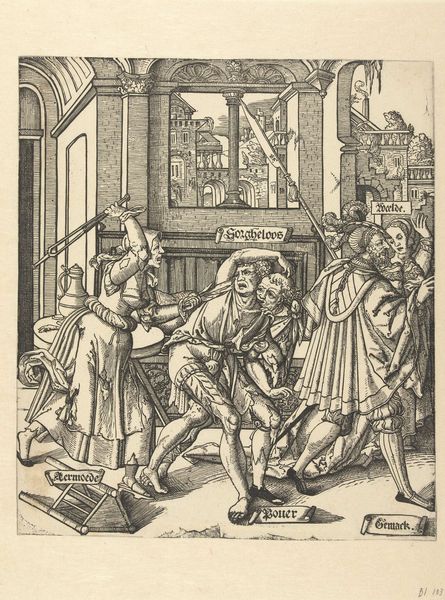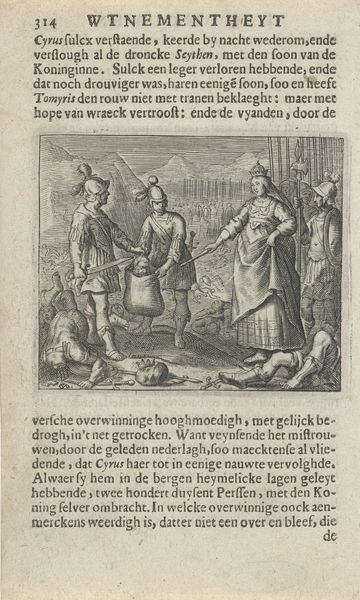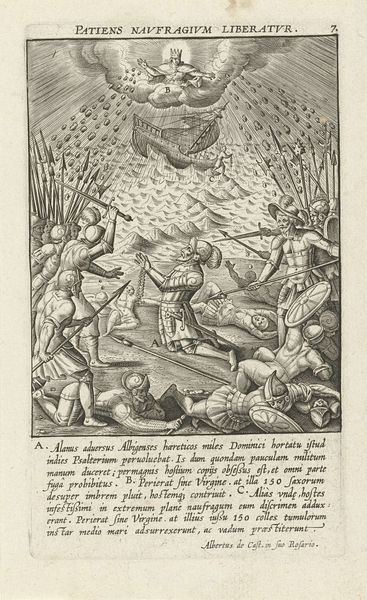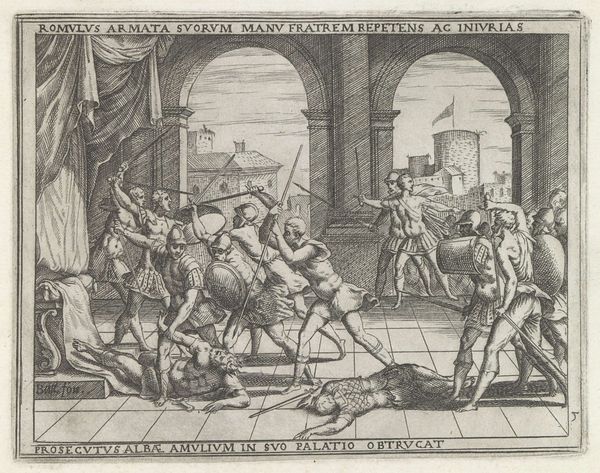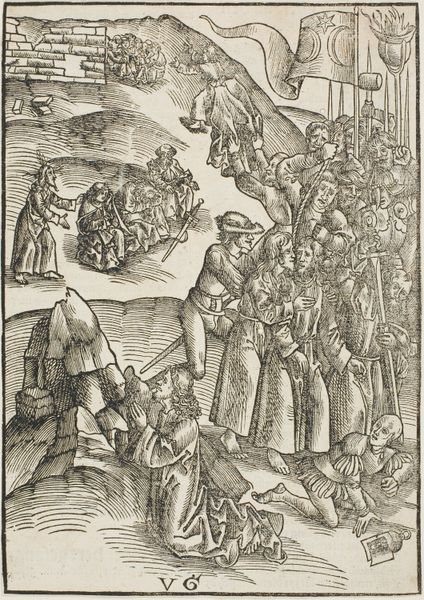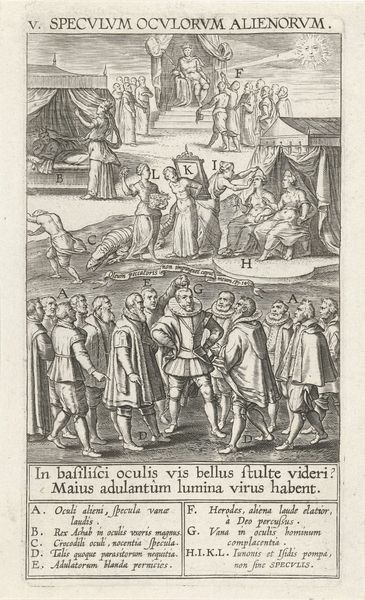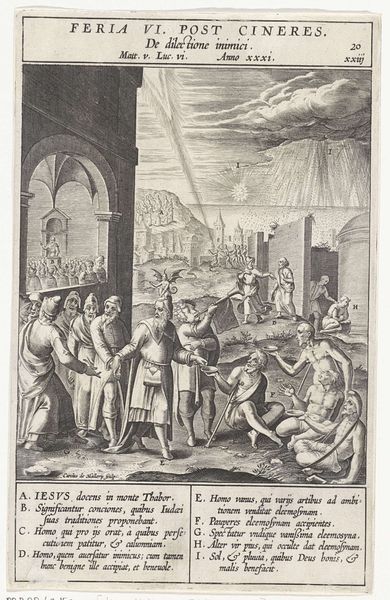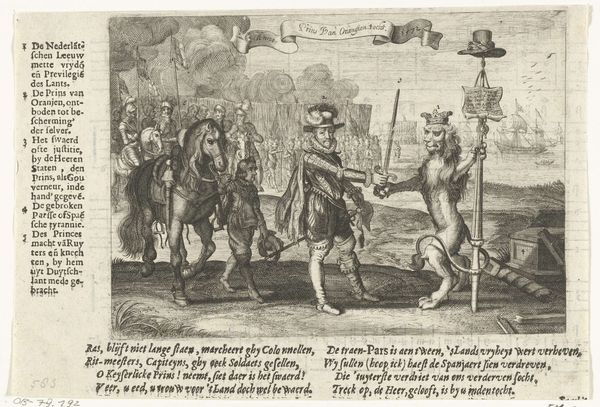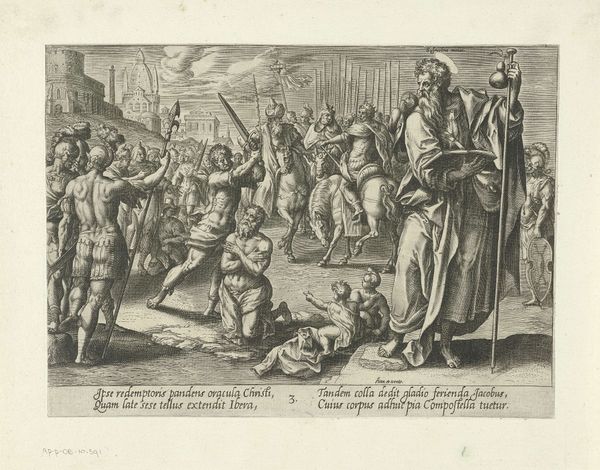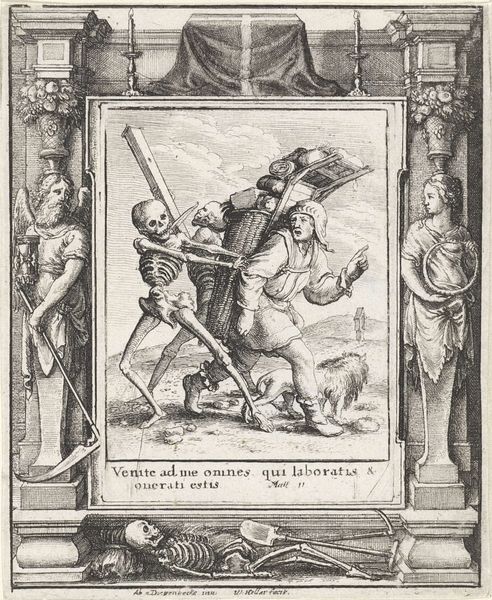
Dimensions: height 152 mm, width 89 mm
Copyright: Rijks Museum: Open Domain
Editor: This is "Spiegel der welbehagen," or "The Mirror of Self-Satisfaction," an engraving by Theodoor Galle, dating back to 1610. The density of the linework is remarkable. So much is going on, but it feels carefully balanced. What visual strategies does Galle employ to unify the composition? Curator: Indeed, the print's intricate structure commands attention. Observe how Galle meticulously arranges these typological examples across the picture plane. It invites an intriguing comparison. Note the prominent placement of figures arranged in a U-shaped formation drawing the viewer's eyes into the composition. Consider the semiotic relationships. For instance, the mirror stands centrally as a point of reflection. How does this visual positioning affect its symbolic meaning? Editor: So, the placement of figures really dictates the relationship to the moral narrative? It’s less about realism and more about delivering the message, almost like a comic, but a lot more philosophical! Curator: Precisely. The engraving utilizes line and form to construct a symbolic tableau, prioritizing the communication of an idea over strict representational accuracy. Furthermore, Baroque prints often aim to convey complex allegories through visual devices, prompting reflection on themes. Do you notice any specific repeating patterns of lines or shapes? Editor: I do see that everyone’s posture, whether upright or slumped, reinforces the central theme of vainglory or, well, downfall. Is it right to say Galle prioritizes narrative clarity above all else? Curator: Exactly. The piece operates as a visual treatise, aiming to explore the notion that vanity ultimately leads to ruin. Note how that man down there is in fetal position, in opposition to the powerful figure up top that has the mirror held up to his face. The print relies on linear precision and symbolic organization. It shows how complex ideas can manifest visually through a tightly controlled, highly structured image. Editor: I see it! I realize it's less about aesthetics, and more about Galle using design as a means to moral instruction. Thank you. Curator: The beauty lies in understanding how form serves function, revealing deeper cultural meanings embedded in art.
Comments
No comments
Be the first to comment and join the conversation on the ultimate creative platform.
